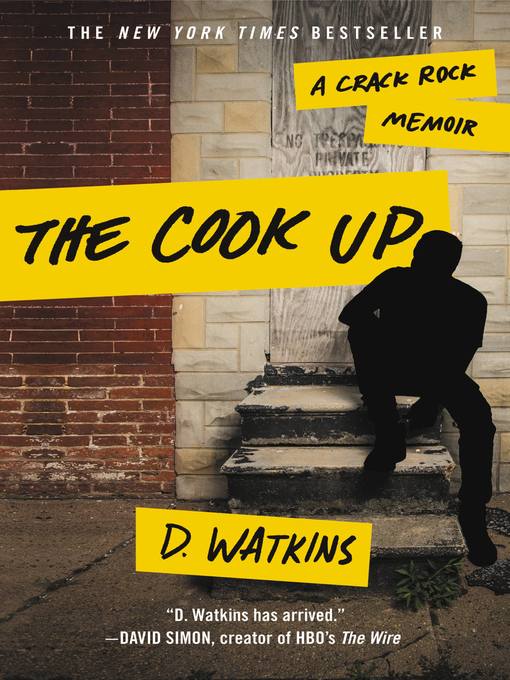
The Cook Up
A Crack Rock Memoir
کتاب های مرتبط
- اطلاعات
- نقد و بررسی
- دیدگاه کاربران
نقد و بررسی

March 15, 2016
A memoir of growing up and selling drugs on East Baltimore's bloody corners. Watkins follows up his acclaimed The Beast Side: Living (and Dying) While Black in America (2015) with a personalized account of the lure of the gangster life for many inner-city black Americans, as well as the grim circumstances propelling them into it. The author opens with his beloved brother's senseless murder ("selling drugs seemed legal where you lived and he taught you how to be extra careful because bodies dropped every day") and chronicles how, devastated, he used an inheritance of drugs and money to enter "the game" himself. This occurred with incongruous ease, as his new crew retook an old drug corner. "Street fortunes were made and lost there," he writes. "My Uncle Gee had it for the longest." With canny promotion and good-quality product, Watkins established himself as a prominent, low-key dealer: "I could stack a few hundred grand without shooting anyone while I figured my life out, met some girls, and had some fun." Things proceeded smoothly, despite occasional violent incursions and Watkins' awareness that his operation, though discreet, fueled the community's most destructive aspects even while contributing economically to it. He ultimately extricated himself and entered college as his erstwhile colleagues paid the costs of addiction and felony charges. The author's writing projects keen awareness of both the mediated image of the young black dealer and the actual grim life prospects for a generation of his inner-city peers. His memoir's strengths include its bleakly humorous, original prose, which pinballs between stoned, brand-focused, hip-hop excess and a more contemplative tone, and the many true, touching, or disturbing small details from the fraught daily lives of America's black underclass. However, many narrative threads trail off unresolved, beginning with his brother's murder, which fuels the story yet is left unaddressed. A familiar story to fans of The Wire, but Watkins provides a gritty, vivid first-person document of a desperate demographic.
COPYRIGHT(2016) Kirkus Reviews, ALL RIGHTS RESERVED.

April 15, 2016
The author of the acclaimed The Beast Side (2015) inherited his brother Bip's big-time Baltimore dope business after Bip's murder. Watkins' story, told in hip-hop style with appropriate slang, is in large part a reclamation saga, a kind of rap dream, as Watkins transforms himself from drug dealer to teacher and writer (he has a master's from Johns Hopkins). The book is in the tradition of Claude Brown's Manchild in the Promised Land (1965), Sister Souljah's No Disrespect (1995), and numerous other up-from-the-ghetto memoirs. It also evokes Jeff Hobbs' The Short and Tragic Life of Robert Peace (2014) in its emphasis on promising black lives potentially cut short by drugs. Watkins, whose essays often appear in Salon and the New York Times, is a powerful writer, and he uses short chapters to heighten the quick-strike effect of his words, which often land like a punch in the stomach. The treatment of women in the drug subculture, as it is described here, will disturb many readers, but there's no doubting that Watkins is the real deal.(Reprinted with permission of Booklist, copyright 2016, American Library Association.)

























دیدگاه کاربران